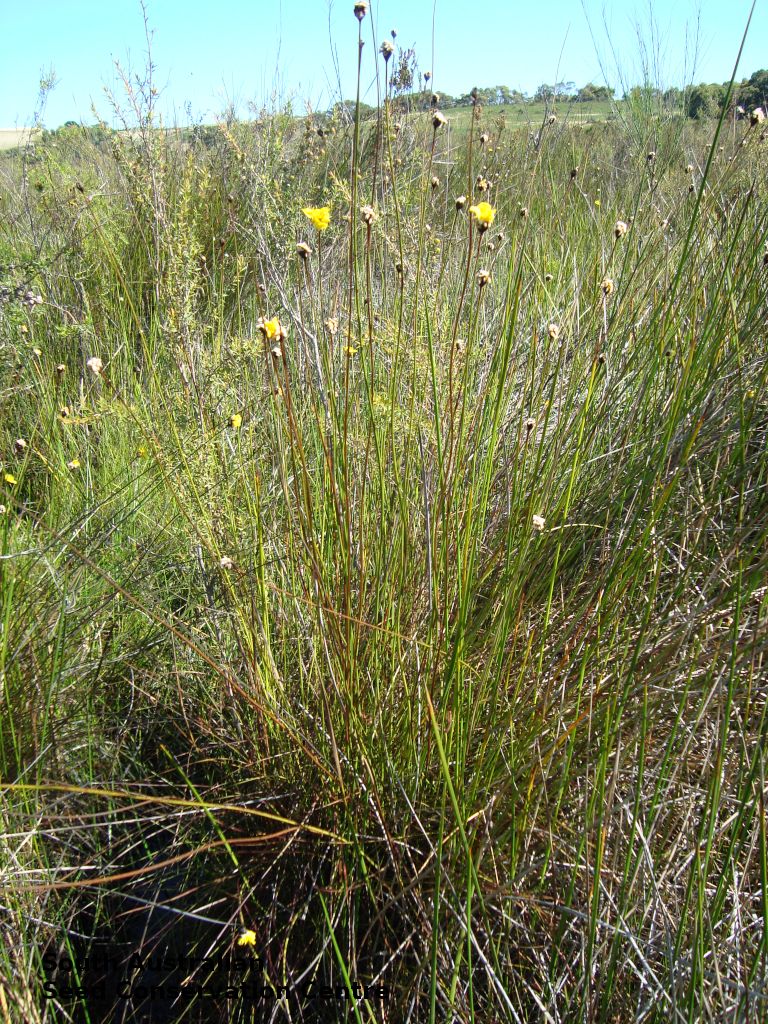
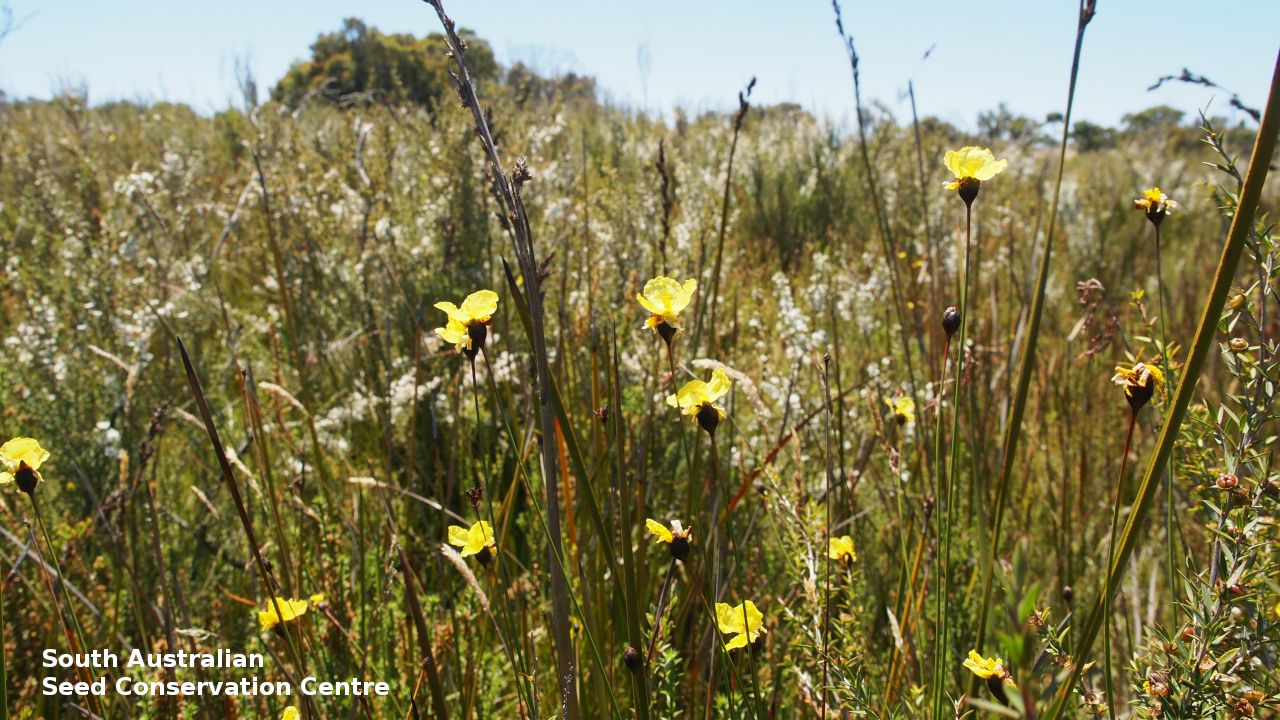
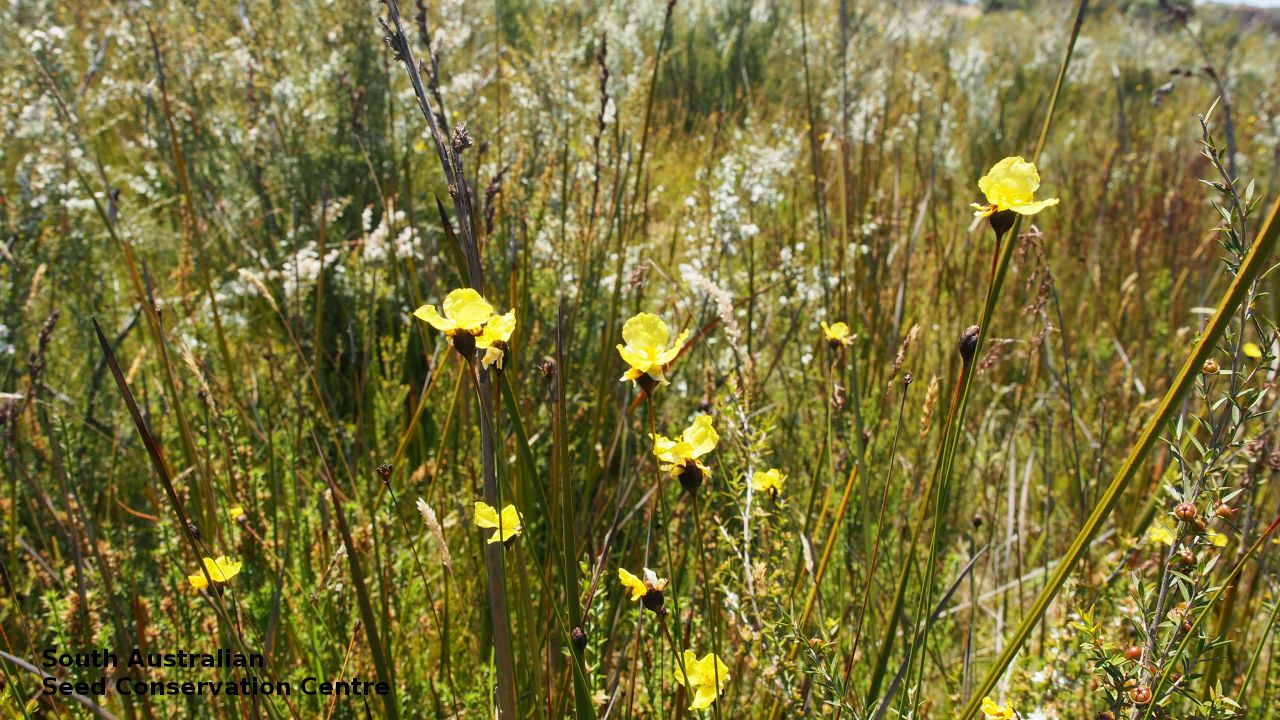
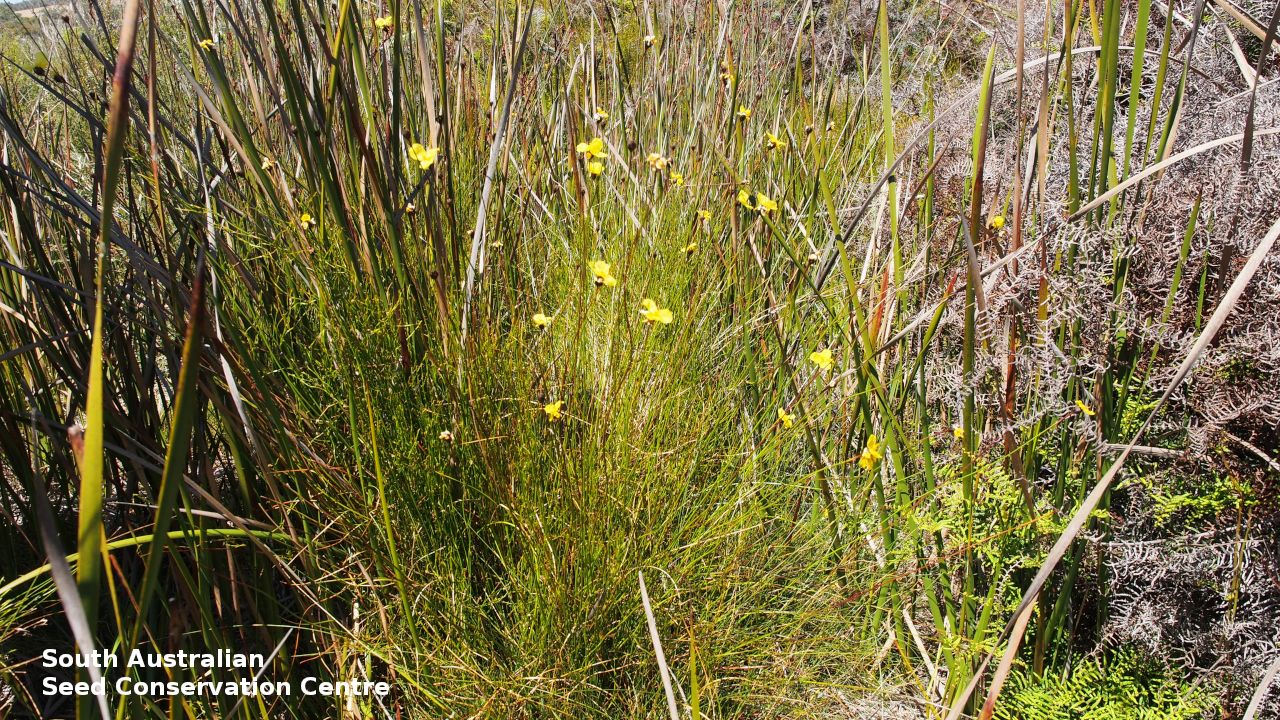
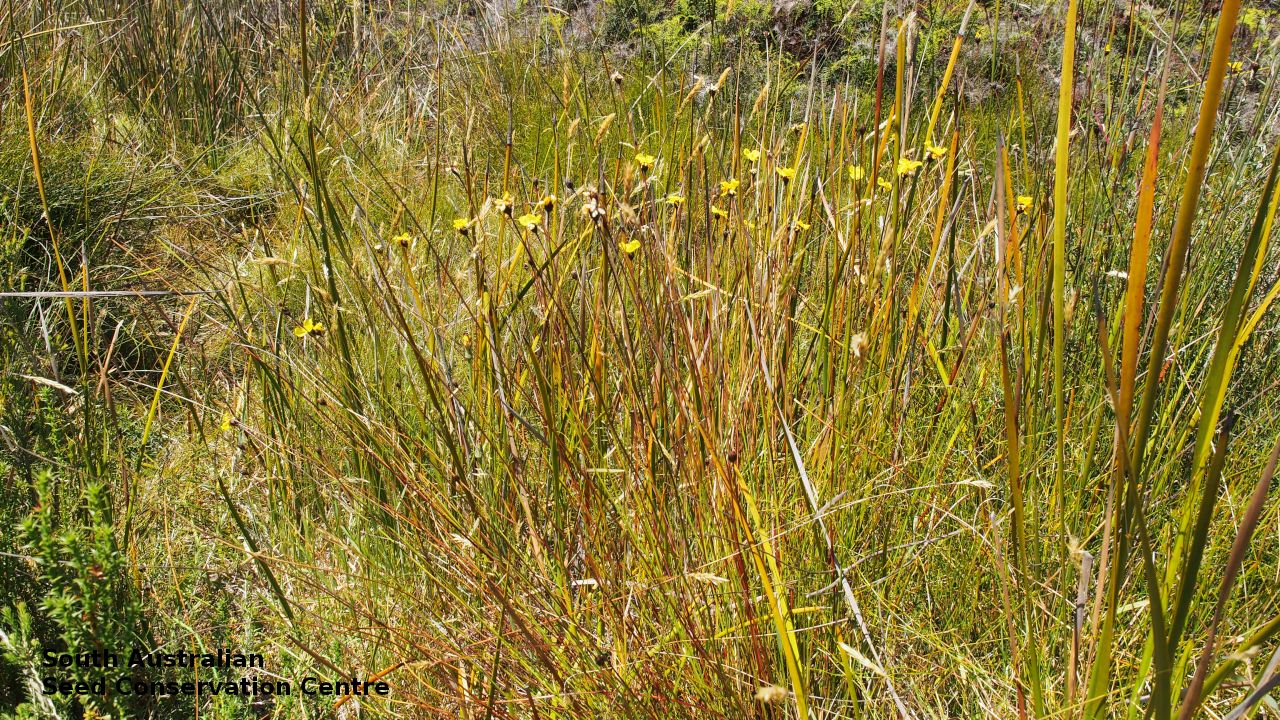
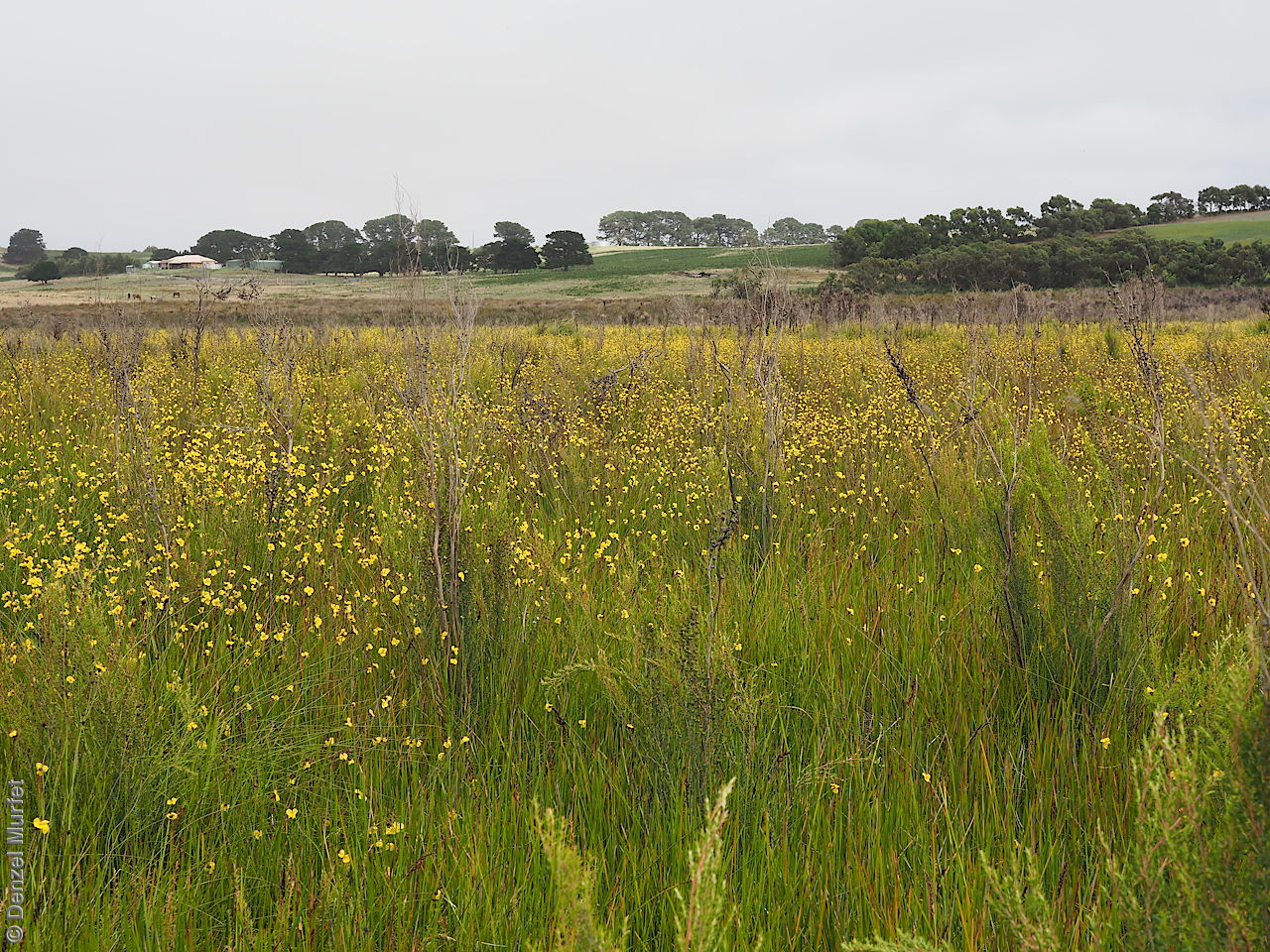
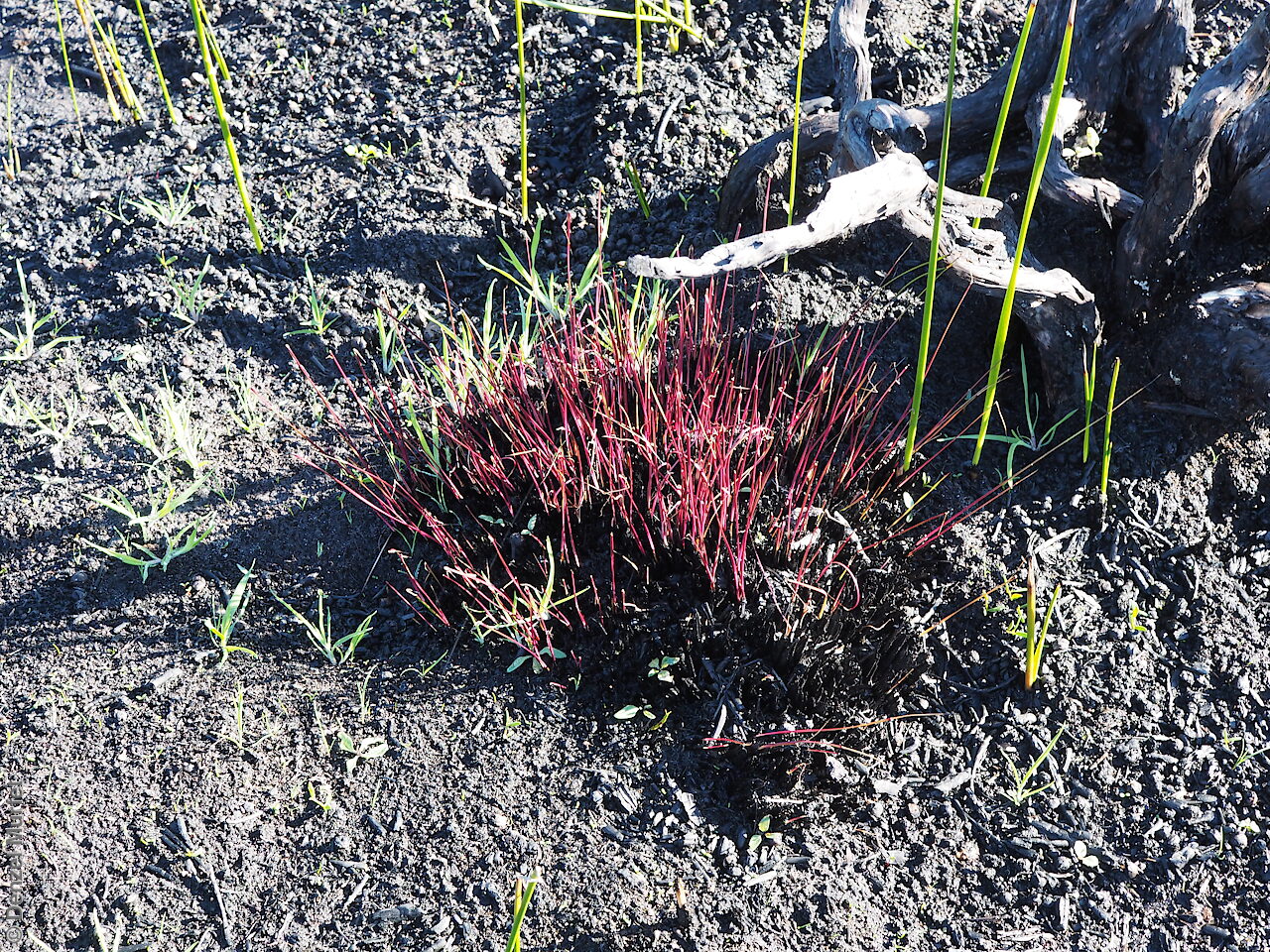
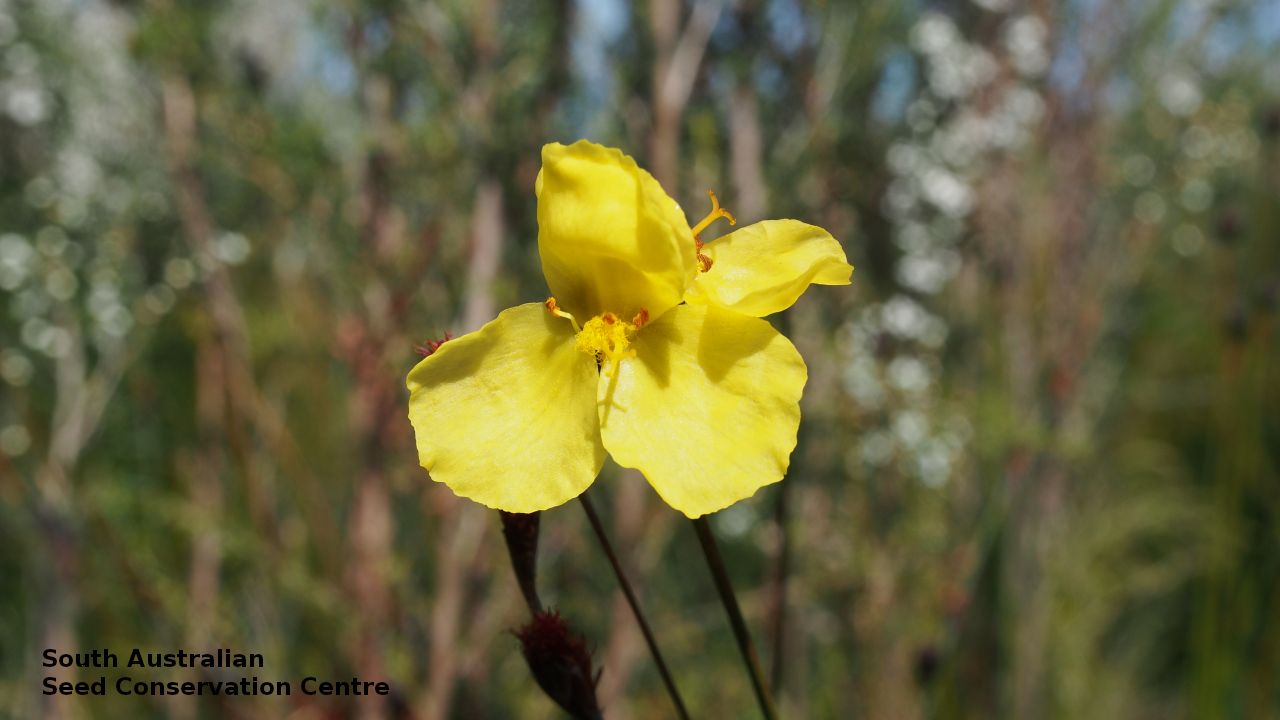
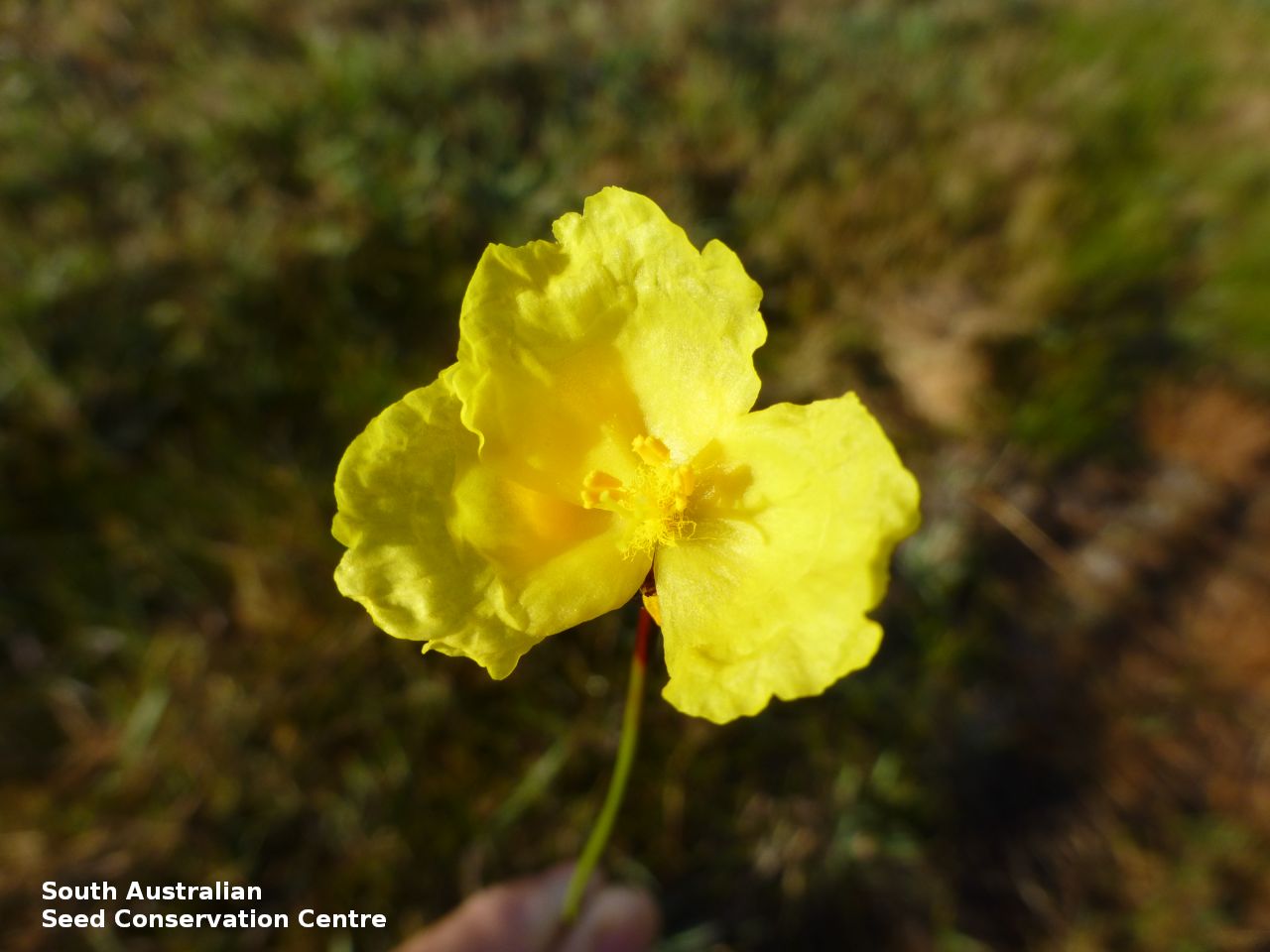
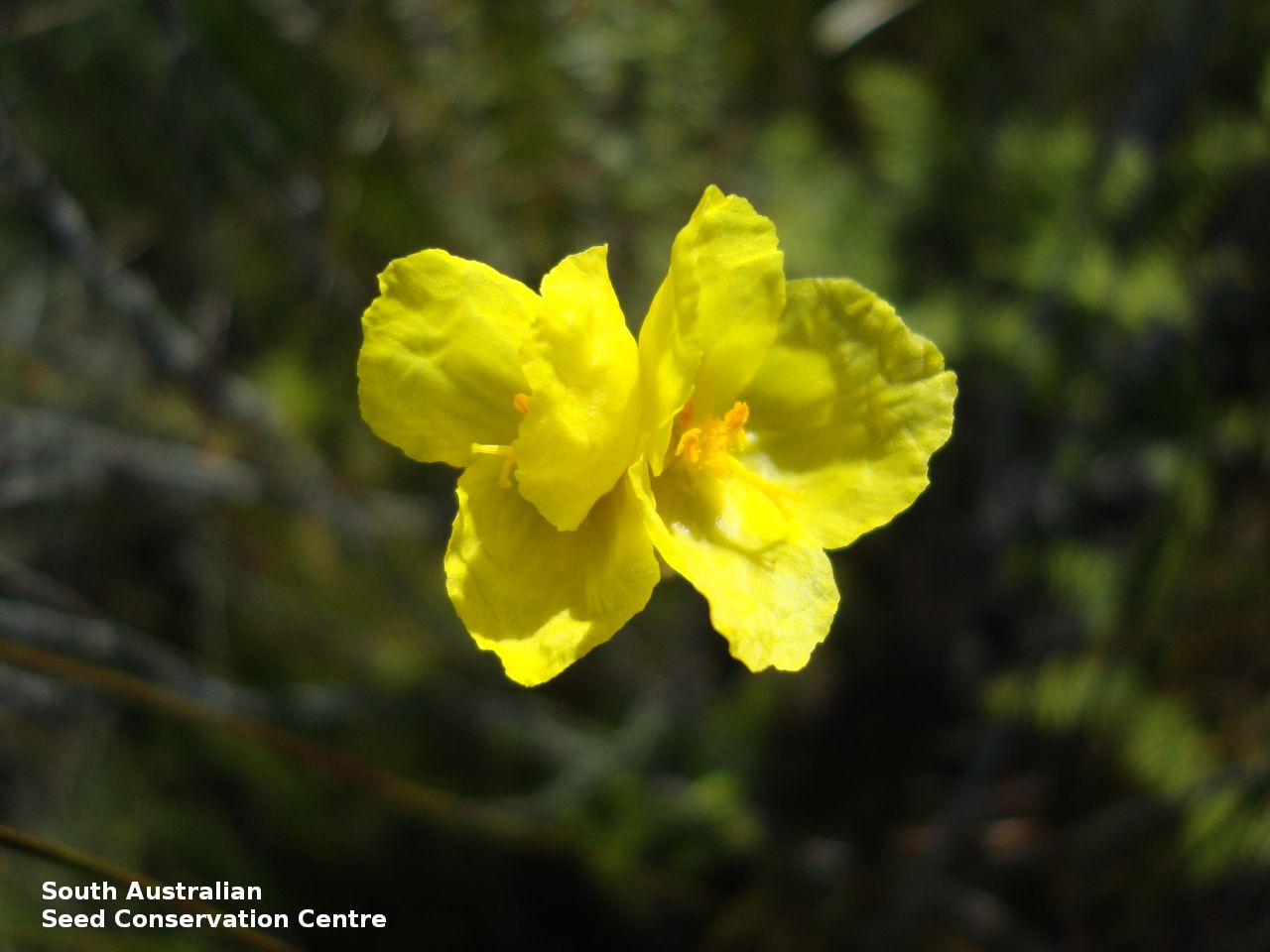
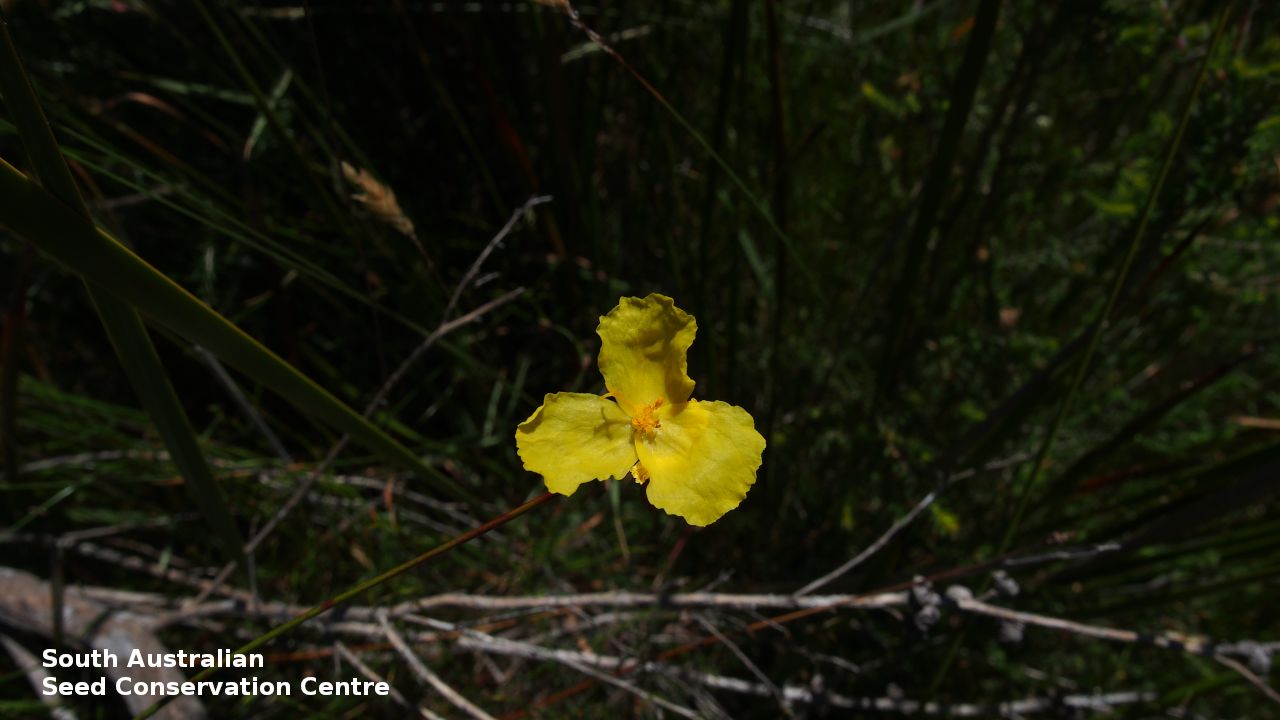
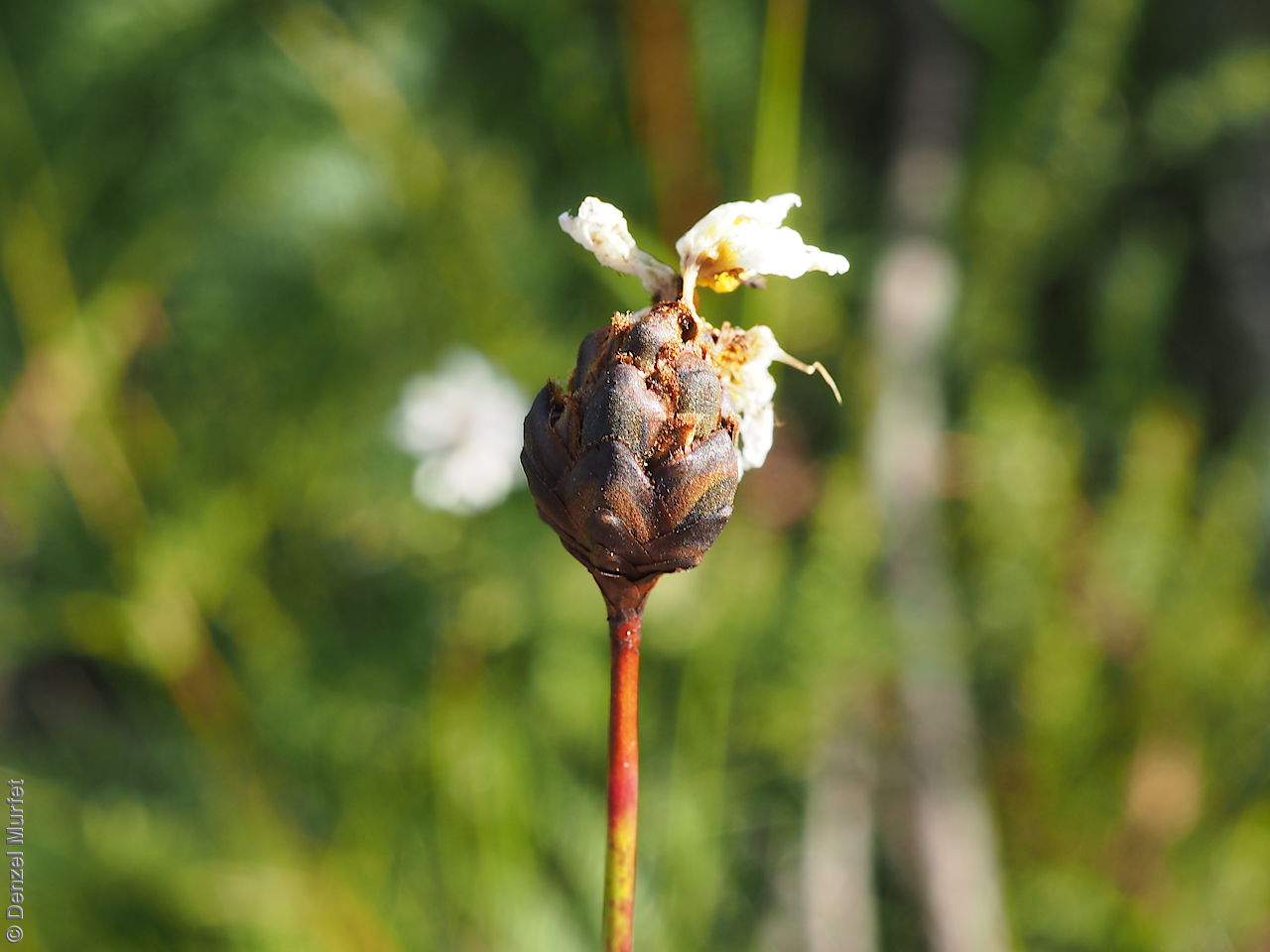
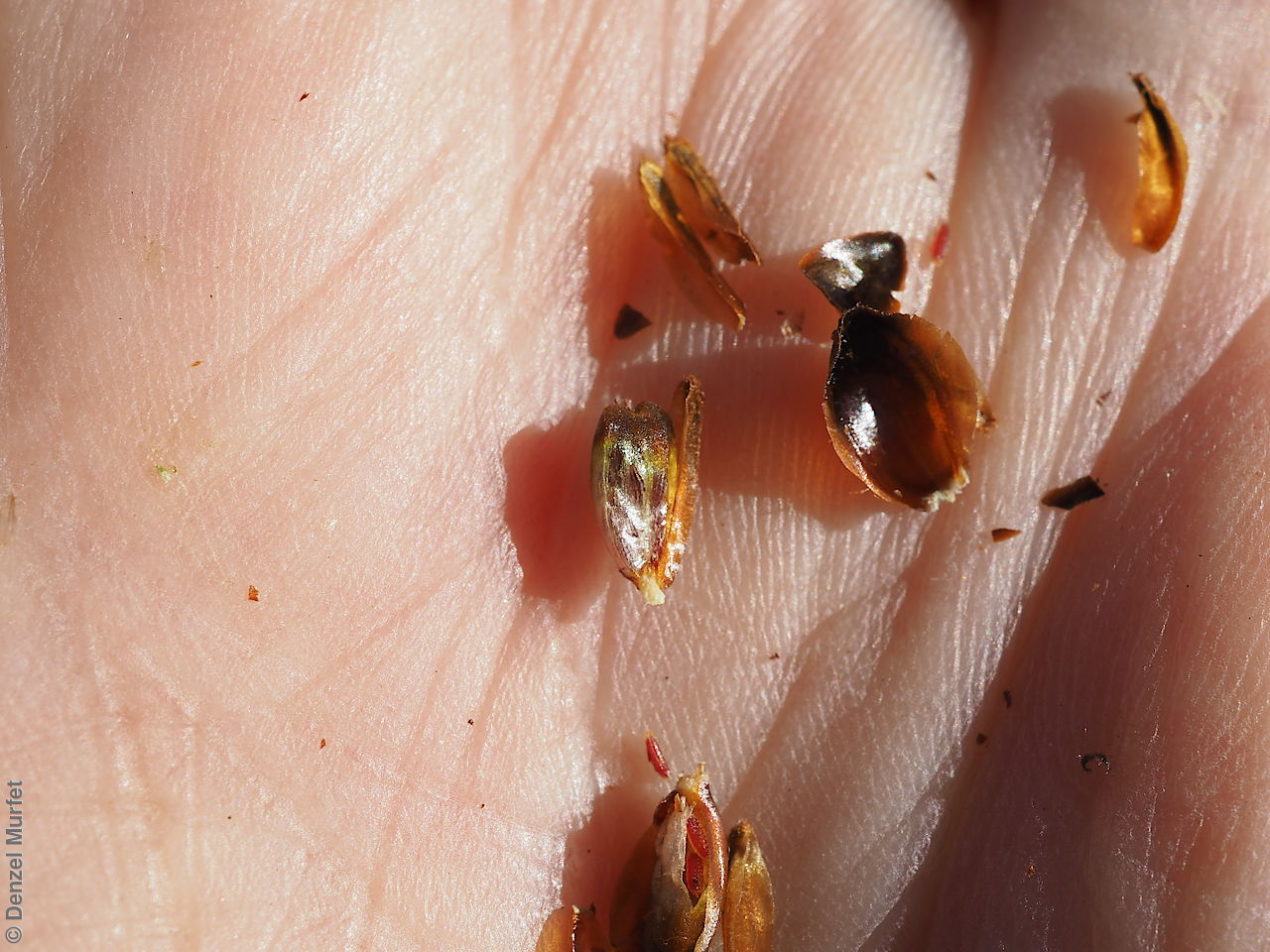
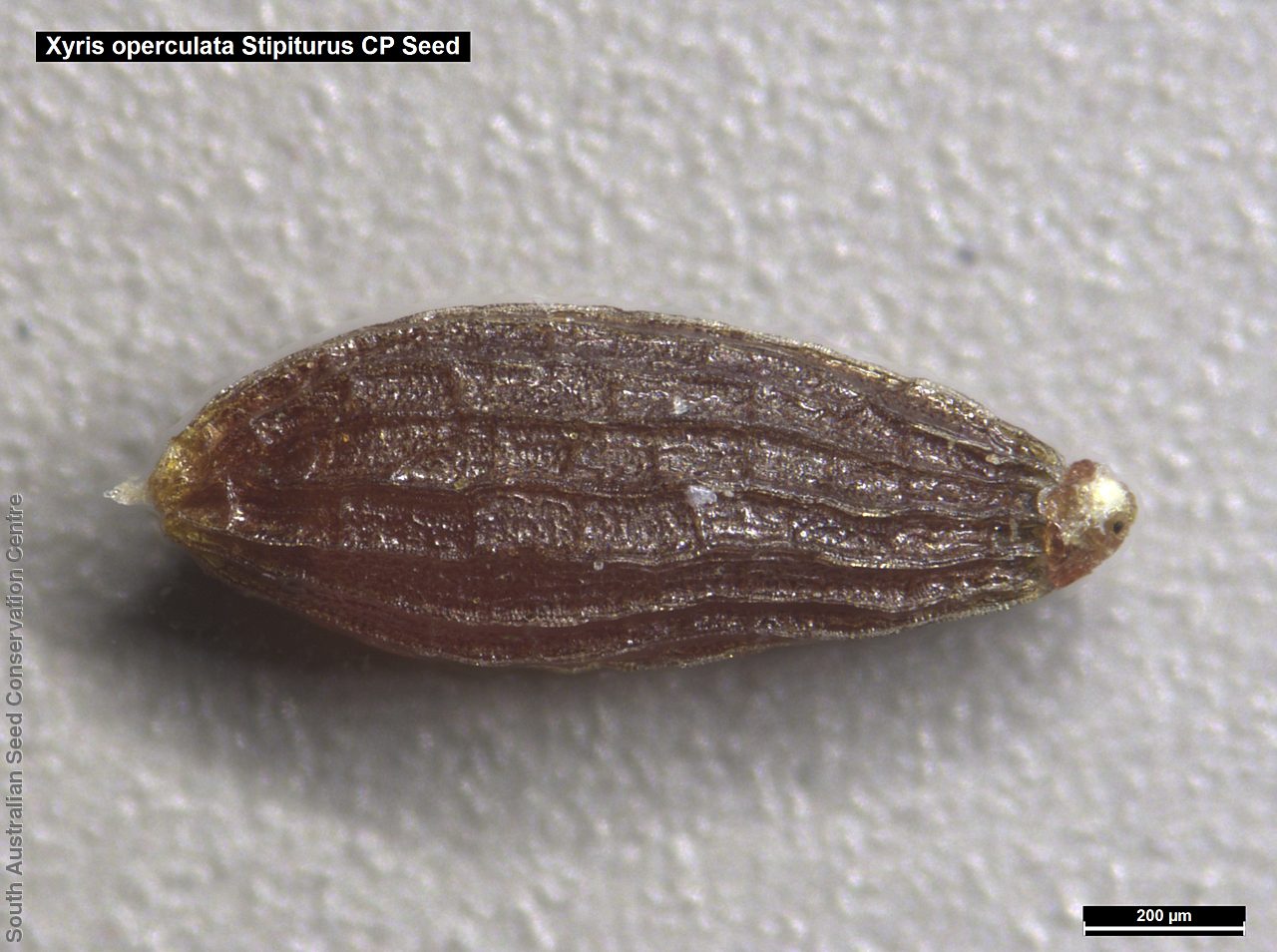
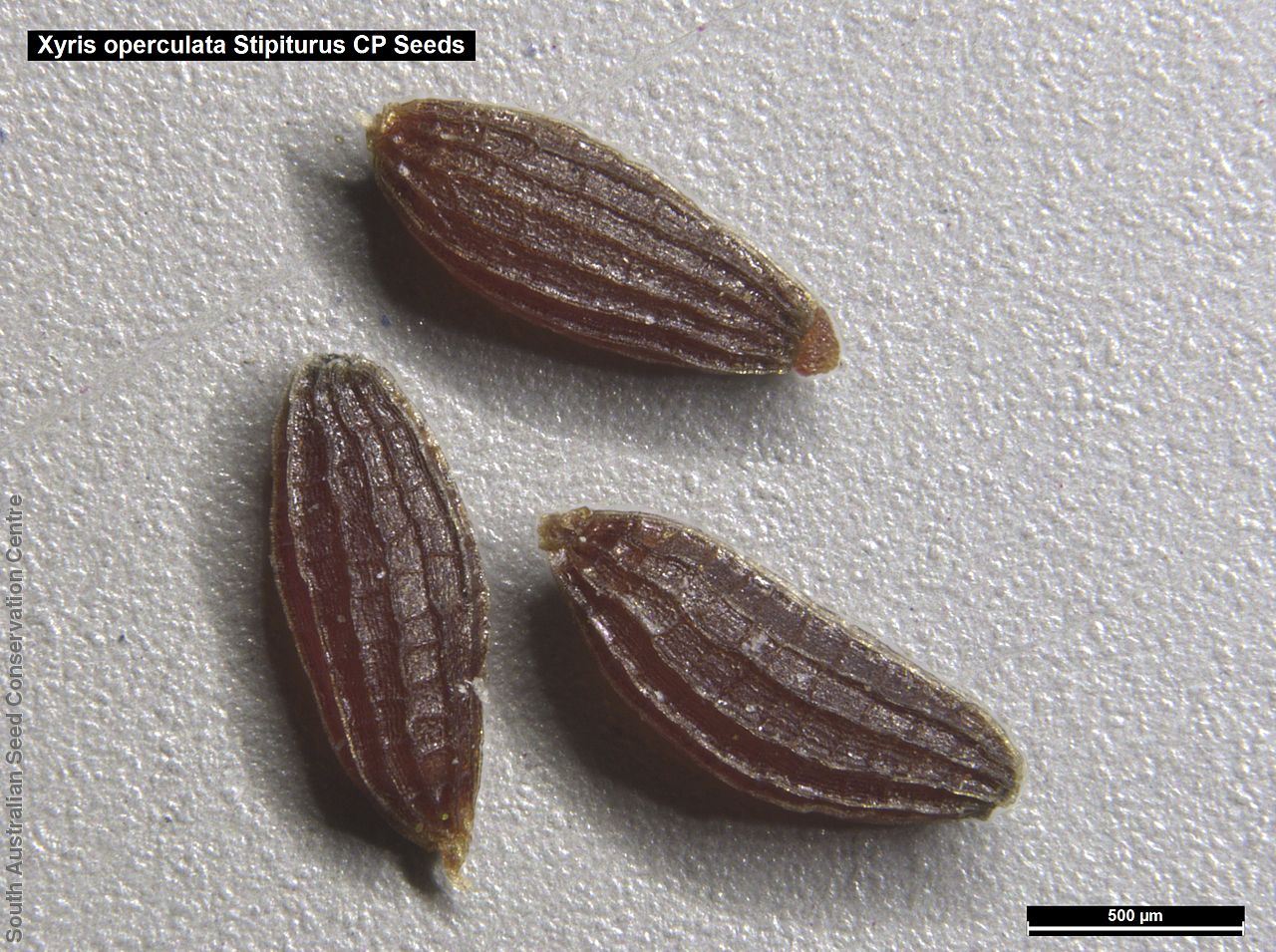

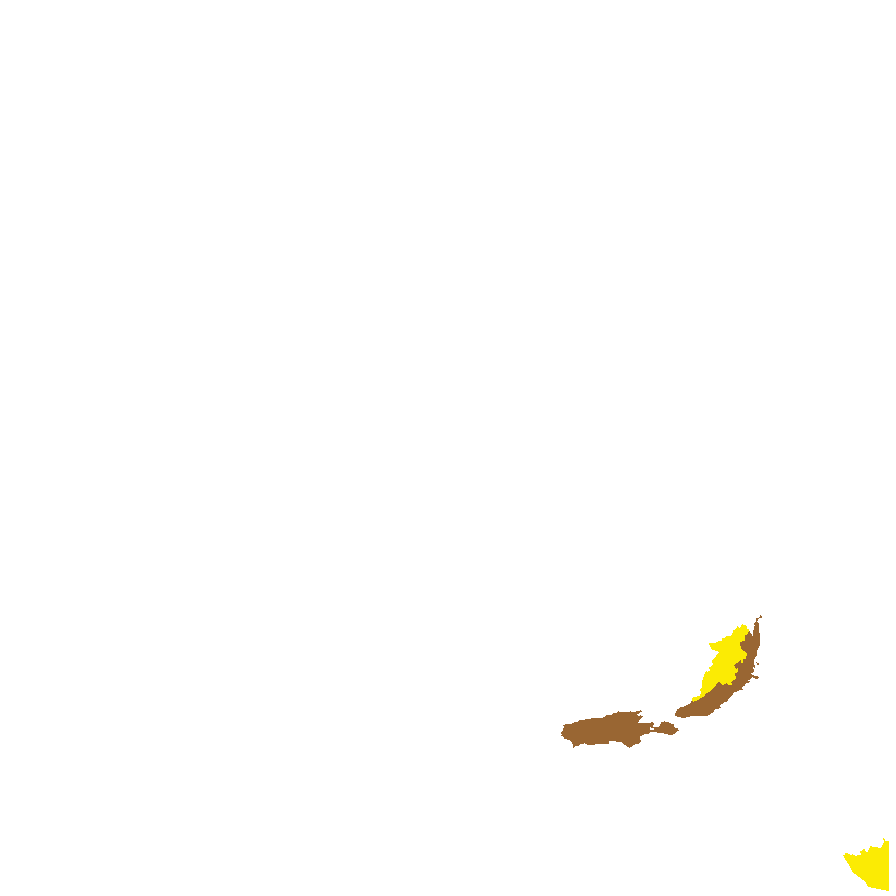
Botanical art
Etymology
Xyris from Greek meaning razor and a name used by Dioscorides for Iris foetidissima, alluding to the similarity of this genus to the Iris. Operculata from the Latin 'operculum' meaning a lid, referring to when the fruits dehisce, which partially open like a lid.
Distribution and status
Found on Kangaroo Island, southern Mount Lofty Ranges and the lower South-east in South Australia, growing in wet heath-lands and swampy areas. Also found in Queensland, New South Wales, Victoria and Tasmania. Native. Rare in South Australia. Uncommon in Queensland. Common in the other states.
Herbarium regions: Southern Lofty, Kangaroo Island, South Eastern, Green Adelaide
NRM regions: Adelaide and Mount Lofty Ranges, Kangaroo Island, South East
AVH map: SA distribution map (external link)
Plant description
Perennial sedge-like plant with slender scapes to 50 cm high. Leaves linear, with shining brown sheaths. Flower-head terminal, singular, ovoid or globular, to 12 mm long with almost black broad bracts and large yellow flowers. Flowering between November and January. Fruits are hard, dark brown capsule, opening by distal slits. Seeds are small, reddish-brown, ovoid to 1.2 mm long and 0.5 mm wide.
Seed collection and propagation
Collect seeds between January and April. Collect heads that are maturing, turning dark brown, hard and contain dark seeds. Place the capsules in a tray and leave to dry for two weeks. Then rub the capsules by hand or with a rubber bung to dislodge the seeds. Use a sieve to separate the unwanted material. Store the seeds with a desiccant such as dried silica beads or dry rice, in an air tight container in a cool and dry place. Seed viability is usually high.
| Location | No. of seeds (weight grams) | Number of plants | Date collected | Collection number Collection location | Date stored | % Viability | Storage temperature |
|---|---|---|---|---|---|---|---|
| BGA | 10,800 (0.94 g) | 50+ | 5-Apr-2005 | DJD130 Southern Lofty | 28-Mar-2006 | 100% | -18°C |
| BGA MSB | 23,900 (2.07 g) 23,900 (2.07 g) | 50 | 20-Jan-2005 | MKJ70 South Eastern | 28-Mar-2006 | 100% | +5°C, -18°C |
Number of plants: This is the number of plants from which the seeds were collected.
Collection location: The Herbarium of South Australia's region name.
% Viability: Percentage of filled healthy seeds determined by a cut test or x-ray.